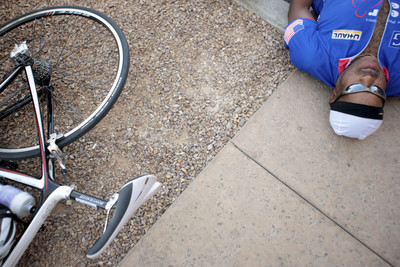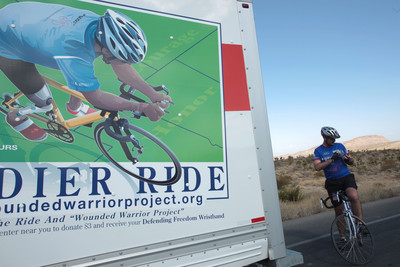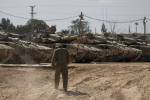Soldiers need support at home, too
Joseph Serino would tell the driver to slow down, that he needed to scan the tops of buildings for snipers and the roadside for bombs. He would look at a bush moved by the breeze and wonder if the enemy lurked behind. He always wondered what danger waited around the next bend.
He was in Palo Alto, Calif., at the time, in the charming, affluent city in the northwest corner of Santa Clara County, where some of the world's most famous high-tech companies surround Stanford University.
By all accounts, he was in heaven.
But even while passing all the Colonial homes along the tree-lined streets, Serino's mind drifted back to Southern Baghdad, back where his Army vehicle was ambushed in June 2007, back where it hit a bomb and his legs were blown off, back to hell.
"It took awhile to adjust (coming home)," Serino said of those days while rehabbing in the Bay Area. "I was very paranoid. It doesn't go away. Some soldiers deal with it. Some can't."
Many just give up and kill themselves.
More than you can imagine.
The words have been repeated for years now, painted on buildings and stuck to automobile bumpers and printed on T-shirts and shouted from atop parade floats.
Support Our Troops.
There should be an addendum to that motto ... Especially When They Come Home.
When soldiers are deployed to conflict in Iraq or Afghanistan or other places around the globe, we often pray.
When they return, frequently with loss of limb and spirit and neither the mental capacity nor physical strength to again confront the realities of civilian life, we need to act.
This is what the Wounded Warrior Project is about, to offer programs and services that help ease the transition from battlefield to hospital bed to a self-sufficient, productive life.
This is why bike rides like the one Serino and other soldiers took the past several days are staged, why traveling from Phoenix to Lake Havasu City, Ariz., then into Las Vegas helps make for healthier minds and bodies for those who gave much of both to war.
Think about it. We see prosthetics. We notice wounds. The missing arms and legs are genuine reminders. But what we can't observe and definitely not understand unless having lived the nightmare is the internal struggle soldiers endure when trying to fit back into society.
Technology can fix the outside injuries.
But what about those inside?
Phil Valentine hadn't any idea how profound the crisis was when he agreed to produce and direct a documentary on soldiers who return wounded. The Las Vegas filmmaker spent the last year chronicling the lives of such men and women and unveiled his movie, "Who Will Stand," on Wednesday evening here.
On Thursday, he rode with them down the Strip and to Red Rock Canyon, rode alongside the ones with missing arms and legs and those with an immeasurable need to discover how best to again live a normal life.
"We learned over the last year what type of people they are, about their commitment and dedication and patriotism," Valentine said. "We also learned about the psychological issues they confront coming home, that their alcoholism rate is four times the national average and their divorce rate is three times the national average and the suicide rate of all active and nonactive veterans is 18 soldiers per day.
"They're walking around with $100,000 arms, but their psychological issues aren't being dealt with. People genuinely want to help, but they don't know how because they don't know the problems these guys suffer from. One of them could be walking past you in a mall ready to kill himself, and you would never know."
Here's why: In the minds of many soldiers, the stigma attached to seeking psychological help isn't worth being treated differently while in the military or when seeking a job outside it. So they remain quiet. They never inquire about therapy. They try to deal with their demons cold-turkey, a choice that often ends with them pointing a gun to their head and pulling the trigger.
For all the numbers Valentine's research discovered the last year, consider just two: It is estimated that nearly 100 percent of veterans of Iraq and Afghanistan wars will suffer from some form of mental illnesses such as post-traumatic stress disorder, and since a V.A. suicide hotline was introduced in July 2007, more than 22,000 soldiers have dialed the number.
Joseph Serino, not yet 21 and newly married with plans of working in aviation technologies in Palmdale, Calif., understands the plight of so many of his fellow soldiers.
"In therapy, they teach us ways to overcome the (paranoia and depression)," he said. "You have to learn to control it.
"I have no regrets. I served my country, did my time, came back and am good to go."
Ready to face the world with no legs but an unbelievable spirit. Here's hoping more wounded soldiers can find such peace.
For information on the Wounded Warrior Project, go to www.woundedwarrior project.org.
For information on Valentine's documentary, go to www.whowillstand4us.com.
Ed Graney can be reached at 383-4618 or egraney@reviewjournal.com.
Video






























